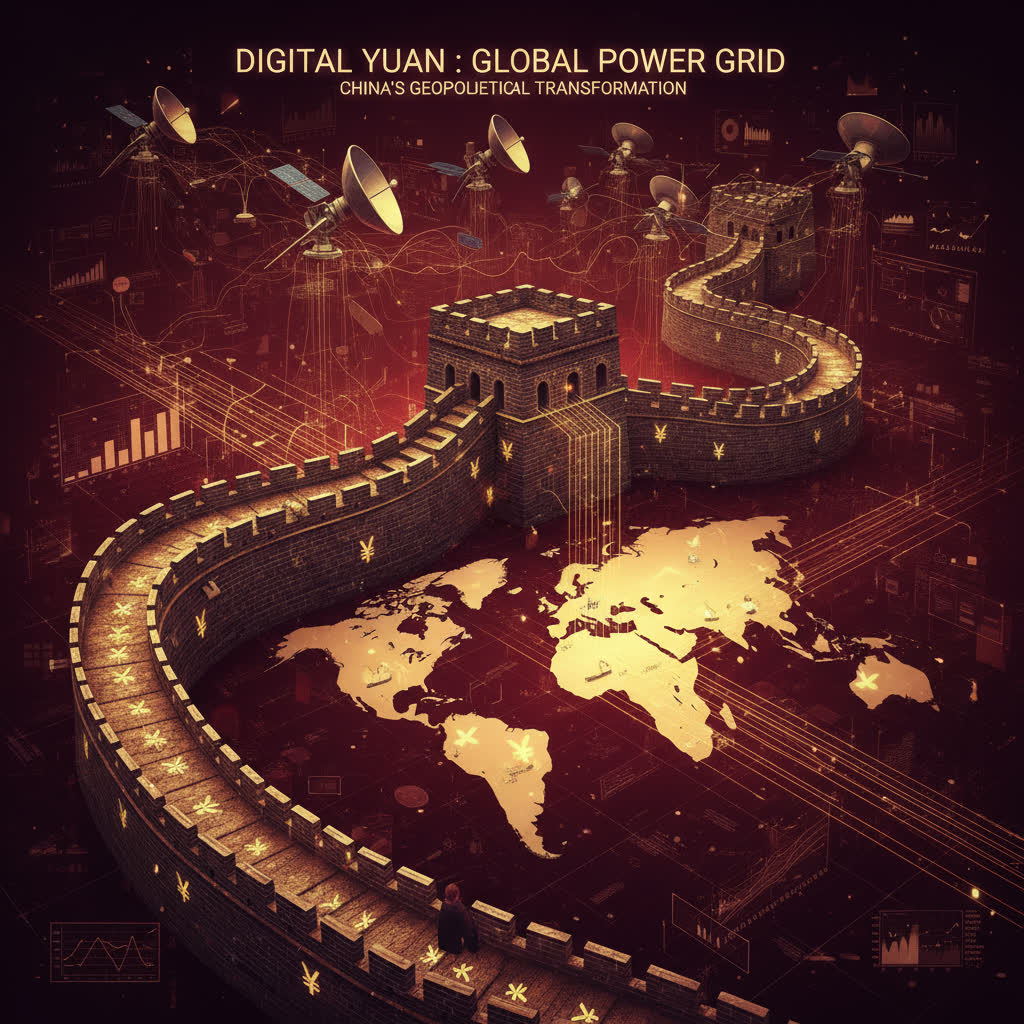In recent years, the world of finance and technology has seen a remarkable transformation—not just in the rise of digital currencies, but in their evolving role as tools of statecraft and geopolitical influence. According to a report by the Chinese-language journal Study Times, published by the Central Party School of the Communist Party of China, digital assets—including central bank digital currencies (CBDCs) and cryptocurrencies—are increasingly being framed as instruments of “mobilised finance” for national security, economic resilience and strategic influence.
Digital Money: From Innovation to National Instrument
As the report highlights, what began as innovation in monetary systems has matured into a broader paradigm, where digital currencies are embedded in the architecture of power. Blockchain networks are described as “digital logistic frontiers” — marrying economic survival with national security concerns. In this view, states are not merely experimenting with digital money for convenience or efficiency, but for sovereignty, resilience and strategical autonomy.
For example, the Chinese government’s development of the digital yuan (e-CNY) is not only about replacing cash, but about building a financial ecosystem that can operate outside the traditional global financial architecture. The referenced analysis notes that by digitalising capital flows, Beijing improves its ability to manage liquidity, fund defence-related industries and insulate domestic demand when global finance falters.
A New Theatre of Conflict: Finance, Data, and Borderless Power
The article goes further by categorising modern conflict zones beyond conventional warfare: “total war, hybrid war, and digital-financial war.” In this conception, digital ledgers and tokenised assets become strategic assets: enabling cross-border capital movement, bypassing sanctions regimes (such as the U.S.-dominated SWIFT network), and providing alternate routes for trade and value exchange.
More strikingly, the study points to examples of illicit use of digital assets: cryptocurrency exchanges in sanctioned jurisdictions channelled large volumes of illicit capital, and extremist organisations (e.g., Hezbollah, Hamas) have reportedly tapped stablecoins to raise funds. The implication is that digital money is no longer simply a financial innovation—it is entangled with national security, crime, and geopolitical competition.
Global Ripples: The Dollar’s Waning and the Multi-Pole Monetary Landscape
An important dimension of this shift is what it means for the dominance of the US Dollar. Economist Barry Eichengreen observes that the dollar’s share of global reserves has fallen from roughly 71 % in 2000 to about 58 % by 2024. Meanwhile, China and its allies are building alternate payment networks—one example being the mBridge initiative linking the central-bank digital currencies of China, the UAE, Saudi Arabia and Thailand, bypassing SWIFT. In essence, the terrain of monetary power is shifting.
This matters for all global actors: if digital currencies become tools for geostrategic manoeuvring, then financial infrastructure becomes a domain of competition akin to aerospace or cybersecurity.
Why It Matters & What to Watch
-
For policymakers: This phenomenon suggests that regulatory frameworks around digital currencies must account not just for financial stability and consumer protection, but for national-security implications and cross-border power flows.
-
For investors: Understanding this evolving role of digital assets could reshape how one views “crypto” risk and opportunity—not purely as a speculative asset class, but as a component of geopolitical strategy.
-
For global commerce: As digital currency networks proliferate, global trade settlement may gradually shift away from dollar-centric systems. That could impact forex markets, cross-border investment and even bilateral trade agreements.
Key signals to monitor include:
-
The pace of CBDC adoption in major economies.
-
Multilateral initiatives linking digital currencies across jurisdictions.
-
Regulation of stablecoins and crypto flows with national-security implications.
-
Shifts in reserve currency composition and use of alternative payment rails.
Conclusion
The headline is clear: digital currencies are no longer just financial instruments—they have become weapons of geopolitical strategy. As this Chinese-sourced report illustrates, states like China are treating CBDCs and blockchain infrastructure as core to their economic resilience and strategic independence. The next frontier of global competition may well be fought not only on land, sea and air, but within ledgers and blockchains.
In short, the question becomes not just which digital currency will dominate in the future, but who builds, controls and authorises the rails—and what that implies for power, sovereignty and global money.
Ready to start your cryptocurrency journey?
If you’re interested in exploring the world of crypto trading, here are some trusted platforms where you can create an account:
- Binance – The world’s largest cryptocurrency exchange by volume.
- Bybit – A top choice for derivatives trading with an intuitive interface.
- OKX – A comprehensive platform featuring spot, futures, DeFi, and a powerful Web3 wallet.
- KuCoin – Known for its vast selection of altcoins and user-friendly mobile app.
These platforms offer innovative features and a secure environment for trading and learning about cryptocurrencies. Join today and start exploring the opportunities in this exciting space!

Join our crypto community for news, discussions, and market updates: CryptoBCC on Telegram.

Disclaimer: Always do your own research (DYOR) and ensure you understand the risks before making any financial decisions.




